When I purchased my first drone in 2017, I didn’t like it that much. I was nervous flying it around and didn’t feel like the quality was all that great. On top of that, I managed to fly into a canyon wall within the first few weeks of owning it. I sold it right after, thinking it wasn’t for me. One year later, with the release of the Mavic 2 Pro, I decided to give it another chance. Since then I have been totally hooked and I now use my drone a lot. I began feeling more confident about my flying skills and enjoy the image quality a lot more – especially after adopting the right techniques. Since then, I have owned several drones, and have currently been flying the DJI Mavic 3 Pro for the last 6 months. In this review, I want to share my experiences with the DJI Mavic 3 Pro and tell you why I picked it over all the other options available on the market today to be my weapon-of-choice. Do I regret buying it? Let’s find out!
Disclaimer: This article is not sponsored in any way. However, when you make a purchase using the link in this article, I may earn a small commission. The drones mentioned are either (previously) owned, or (previously) flown by me. All opinions in this article are my own. If you (dis)agree, I invite you to open a discussion in the comment section.
Special thanks to Shari Asselberghs for taking the cover shot of this review.

One of the highlights on the DJI Mavic 3 Pro is the 3x telephoto camera. I used it extensively for both photography and videography in the last few months and I have to say that I love it. It has forced me to rethink compositions in familiar locations and try new things.

Having the extended battery life and such a great quality wide-angle camera means I have been able to capture photographs I would have never been able to capture – in great quality.
Which Drones Did I Use Before For Photography?
Before I can share why I exactly picked the DJI Mavic 3 Pro, I have to share where I am coming from. First things first: as a photographer my drone usage is primarily for photography, even though I also record videos – for example at the volcanic eruptions in Iceland.
I started out with the original DJI Mavic, after which I switched to the DJI Mavic 2 Pro. That drone accompanied me for about 3 months during the 2021 eruption of the Fagradalsfjall volcano. I loved that drone but it got too damaged due to the extreme heat for me to continue using it safely. At the time, it made most sense for me to purchase the DJI Air 2s as it had the same overall package (sensor, battery life, …) aside from a variable aperture. I loved that little drone and I used it for over one year before I began getting “drone envy” again.
During the summer of 2022 a lot of people I met, especially on my photo workshops, were using the DJI Mavic 3. I had been interested in that drone before but due to the price tag and the fact it launched with limited software functionality, I held off. I’m not going to lie: I got pretty envious at the ridiculous battery life and better range that drone had to offer. Even though I had decided it offered enough value to me, I still held off until eventually the DJI Mavic 3 Classic came along. The reason I picked that one over the DJI Mavic 3 is that I felt the 7x zoom lens was too poor quality to be useful. I used the DJI Mavic 3 Classic for several months until the DJI Mavic 3 Pro was announced, after which I sold the DJI Mavic 3 Classic in favour of the newer, top of the line prosumer drone: the DJI Mavic 3 Pro.

My DJI Mavic 2 Pro suffered a lot after about 3 months of photographing the first volcanic eruption at Fagradalsfjall in 2021. Because it’s impossible to know when you’re too close, you can easily cause heat damage. One problem I had after three months was that none of the bottom sensors worked, even though the damages look pretty ok compared to other drones I had seen.
What I Like About The DJI Mavic 3 Pro
So why did I end up upgrading from the DJI Mavic 3 Classic to the very similar DJI Mavic 3 Pro? Because of my extensive work surrounding the recent volcanic eruptions in Iceland, having extra focal lengths can be a massive advantage to keep your drone safe while also capturing extra detail. While the original DJI Mavic 3 had a 7x telephoto camera, the quality of that lens wasn’t really usable for my taste – especially in low light situations.
Therefore, one of the biggest appeals of the Pro version to me was the excellent 3x telephoto camera, which added the excellent sensor of the Mini 3 Pro to the camera module. I’ve enjoyed using that sensor for photography as well – especially when using my drone techniques to get the most out of that smaller sensor. On top of that, the 7x telephoto camera received a decent upgrade in comparison to the original Mavic 3. It received an improved aperture with sharper footage, better focusing, different colour profiles and the ability to take RAW photographs on launch. During my time using the drone, DJI also added the HLG colour profile to the 7x telephoto camera, which is really great. Although I keep wishing I had that available when I was filming the eruption at Litli-Hrútur last summer. At the time of that eruption, the 7x camera only had the “normal” profile available. Don’t get me wrong though, the footage I was able to get out of that was incredible but it would have been even more special if I had different colour profiles available.
Having these two lenses turned out to be a very worthwhile investment! During the photo workshop in Greenland in June and the eruption that occurred at Fagradalsfjall in July 2023, I put both telephoto cameras to great use and got some really great results.
Having the 7x telephoto lens at my disposal has allowed me to create stunning footage I would have never been able to produce before. This video was recorded in uncropped 4K. I did not crop it before posting it to social media either.

The wide-angle camera on the DJI Mavic 3 series is for me the first drone camera that produces single shot images that I am actually satisfied about.

Having the 3x telephoto camera at my disposal has allowed me to create photographs that were not possible before. By utilising the compression effect, I can compose new images in great quality.

I absolutely love flying my DJI Mavic 3 Pro. The image quality on the wide-angle camera is unparalleled on prosumer drones such as this one. I also upgraded to the DJI RC Pro controller to get better transmission and performance.
Evidently, everything else that was great about the DJI Mavic 3 Classic, and by extension the original DJI Mavic 3, is still present in the Pro model.
All the software additions which were made to the Mavic 3 line-up such as for example waypoints, the new augmented reality home point & cruise control are all present on this top-of-the-line prosumer drone.
The image quality of the main wide-angle camera, which I really enjoyed on the DJI Mavic 3 Classic, is still exceptional thanks to the same micro four thirds sensor. The images coming from this sensor are the first ones I felt are usable as single shots when printing for example.
The lengthy battery life, although slightly less than on the Classic model, is still there with 43 minutes under ideal circumstances. While I only get such numbers during days with no wind at all, it still performs well with a usual 30 minutes of flight time when I don’t fly it in Sport Mode all the time. The DJI Mavic 3 Pro also comes with a 100 watt charging dock if you order the FlyMore combo which vastly speeds up charging times compared to other drones.
Last, but not least, the impressive wind resistance is the same as on the other Mavic 3 models. This is really important to me as Iceland is a very windy place. In the last few months I have put this drone through a lot and even flown it in conditions that went far beyond the listed maximum capabilities. It does remarkably well in keeping speed and holding the camera stable (with one caveat which I will delve into later in this review).

Believe it or not but I shot this photograph in extremely windy conditions, quite far away from the takeoff point. I push my drones much more than most people would find comfortable and the DJI Mavic 3 Pro handled it like a champ without breaking a sweat. The final result is incredible.

I store my DJI Mavic 3 Pro inside a dedicated drone case by f-stop. I wrote a detailed review on this case, which I have been using since before using the DJI Mavic 3 Pro.

I love creating really large panoramic images such as this one. I took in total 45 photographs which is a combination of 9 5-shot brackets. That way I get a very high resolution, very high quality end result. If you want to learn how to create such panoramic images, I recommend you check out my drone photography e-book.
What I Don’t Like About The DJI Mavic 3 Pro
While my overall impression of the DJI Mavic 3 Pro is pretty good, there are a few annoyances I need to point out.
Much more than the other Mavic 3 drones, the larger camera module and its gimbal seems to be suffering from motors that are too weak for its size. One thing I have noticed is that creating top down panoramas (looking straight down and then moving the drone forward) sometimes results in the camera module being knocked a few degrees from it’s -90 degree angle. I essentially fly the drone forward and as it stops, the camera module seems to rotate upwards slightly. When moving the drone at that angle, I also notice that sometimes the wide-angle lens catches part of the drone at the bottom of the frame.
Perhaps connected to that, I also sometimes notice that the horizon on some of the wide-angle shots can be off by one or two degrees. At first I thought it was caused by lens distortion but because it doesn’t always show, I believe it’s a gimbal related problem. Because there is no lens correction profile available in Adobe Lightroom for this drone, it’s difficult to fully determine what is happening. It’s less of a problem to me but it’s something I have never noticed on any drones I have previously owned.
Neither of these issues occur on a regular basis and it seems difficult to find a pattern in when this is actually happening. I am just speculating here but to me, it feels as if the motors are too weak to keep the larger camera module in place, especially in windier environments. I would love to know if anyone else has noticed this. If you have, please let me know in the comments!
The DJI Mavic 3 Pro uses more battery compared to the DJI Mavic 3 Classic. While on paper the loss in flight time is only 3 minutes, in reality, it is quite noticeable that the Pro version has less flight time. While I do not have a direct comparison in similar conditions, overall my feeling is that I can lose up to 7-8 minutes compared to the DJI Mavic 3 Classic in similar conditions. If you compare the flight time to the DJI Air 3, which I tested this summer, I find it’s a pretty significant difference in reality. That drone is listed with 46 minutes of flight time but flying it in similar conditions at the volcanic eruption this summer, I found it lasted several minutes more than my Pro.


This is a RAW image, converted to JPEG, which came straight from the wide-angle camera. This is compared to a version where I fixed the horizon and lens distortion. The horizon in the original image seems to be leaning towards the right. In post-processing you can fix this by rotating the image 1 to 2 degrees and adjusting the distortion manually. Unfortunately, there is no lens profile available in Lightroom for this camera.

When photographing top-down perspectives, sometimes the wide-angle camera looks at the edge of the drone. If I shoot too fast, as I did for this photograph, part of the image is lost due to this black object being in the frame. I believe this is due to the larger camera module and the wide-angle lens being further away from the centre of the hinge compared to the other Mavic 3 models.
The DJI Mavic 3 Pro has the Ocusync 3+ transmission system, which isn’t bad but it could have been better. As I have noticed in the past, it seems to be a classic DJI strategy to release an “inferior” drone with certain improvements compared to newly released top of the line models. In this case, it’s no different when the DJI Air 3 launched with a much improved transmission system called Ocusync 4. It even ships with a vastly superior remote controller, the DJI RC 2. That remote has a faster chipset and external antennas, making it more reliable and usable. Colour me a bit disappointed seeing that improvement on a mid-range consumer drone just weeks after the DJI Mavic 3 Pro hit the market.
This brings me to another annoyance connected to that. The DJI RC, the cheapest dedicated remote controller which comes bundled with the drone, can be painfully slow. This is especially noticeable when you switch between cameras. Sometimes you have to wait up to 10 seconds for the image to switch. I hoped this would improve with software updates but it never did. I ended up getting a good deal on the larger DJI RC Pro controller, which addresses the performance issues. Additionally, because you have different cameras with different sensors & apertures, the settings between cameras do not transfer. While I have gotten used to that, and can quickly change everything on-the-fly, it was rather confusing at first. Some might find these very minor issues but given you have limited time when using a drone, every second counts.

While overall I did not have any focusing issues at the volcanic eruption in Iceland this summer, I did on occasion experience problems with the 3x telephoto lens where it would completely lose all ability to focus. This problem only occurred with that lens and only at the eruption which made me wonder if this is an actual issue others have encountered in different situations or not.
Evidently I flew the DJI Mavic 3 Pro a lot around the volcanic eruption at Litli-Hrútur this summer. Whilst doing that I noticed on several occasions the 3x telephoto lens had issues focusing. This primarily happened when it was darker and the contrast between the glowing lava and surroundings was very high. Whatever I did, the 3x telephoto lens did not want to focus after it lost focus – even when focusing manually. Usually restarting the drone, or even flying around for a while, resolved the issue. The same problem occurred on the DJI Air 3 when I used the 3x telephoto on that. I felt I needed to mention this issue in this review but it’s also fair to say that I have not encountered it under any other circumstances – only at the volcanic eruption. I know other colleagues have had the same issue and in their case, this has also only occurred there. Is this related to the magnetic properties lava can have, heat haze or extreme contrast in darker environments? I am unsure. Several firmware updates have been released since then and, due to the lack of another volcanic eruption happening, I have not been able to test if any of these updates resolves that problem.
This isn’t really a downside for me but I felt it was important to point it out. Because the DJI Mavic 3 Pro has a larger camera module, it is slightly heavier compared to the other two Mavic 3 models. Because its weight is over 900 grams, it has received a C2 rating. This means slightly different rules and regulations apply as to where and when you can fly it. Now, if you mostly fly in remote places where there are no other people, as I do, this doesn’t really change anything at all compared to C1 drones such as the DJI Air 3, DJI Mavic 3 and DJI Mavic 3 Classic.
Finally, as expected, this Pro model is more expensive than all the other drones within this price range. The Pro version is about 600USD more expensive than the Classic. That’s quite the difference but if you get real value out of the extra lenses like I do, that difference may not matter at all.

The cheaper DJI RC remote controller is sluggish and switching between lenses takes forever.

The DJI Mavic 3 Pro is a heavy drone, weighing more than 900 grams. This puts it into a different classification (C2) compared to the other Mavic 3 iterations. This may or may not impact you purchasing one of these drones.
Do I Regret Buying The DJI Mavic 3 Pro?
The answer is plain and simple: NO! I have really enjoyed using my DJI Mavic 3 Pro in the last six months and even though there are some annoyances, there is simply nothing else on the market at this time that does the job better. The photographs and video footage I have gotten out of this drone, and especially the telephoto cameras, were well worth the premium for me. Does that mean this is the best drone for you? No. You might not have a need for these telephoto lenses at all in which case you are likely better off with the cheaper DJI Mavic 3 Classic.
If these drones are outside of your budget, I’ve still got you covered! I created a comprehensive blog which acts as a buyer’s guide for photographers looking to buy a new drone. I have listed something for all budgets.
Pro’s
- Excellent image quality on the wide-angle and 3x telephoto camera.
- Improved image quality on the 7x telephoto camera.
- Many software features being added with updates.
- Good battery life.
- Comes with a 100w charging dock.
- Impressive wind resistance.
Con’s
- Gimbal motors seem too weak for the camera module.
- Slightly less battery life compared to DJI Mavic 3 Classic.
- “Only” the Ocusync 3+ transmission system.
- DJI RC is sluggish, especially when switching cameras.
- Classified as a C2 drone.
DISCOUNT
The Drone Photography Masterclass
Nigel Danson & Jeroen Van Nieuwenhove‘s complete drone masterclass will explore everything you need to know to start creating the best aerial photographs using any type of drone in 50+ detailed videos. Whether you are a complete beginner or an advanced drone pilot, this video course contains a vast amount of information to level up your drone photography skills.
Learn Drone Photography With My E-Book
Want to learn how to get the best results with your newly purchased drone? I wrote the most comprehensive guide available on drone photography which teaches you a technique to get the DSLR-like results out of even the cheapest drones.
In 125 detailed pages I explore everything you need to know to start creating the best photographs using any type of drone. Whether you are a complete beginner or an advanced drone pilot, this e-book contains a vast amount of information to level up your drone photography skills.
What to Expect?
- A 125-page educational PDF about nature drone photography with very detailed explanations
- Which drone to get for photography and why
- Important settings and configuration options
- A list of useful skills & tips
- A list of useful accessories and what not to buy at all
- How to research locations for drone photography
- How to compose with a drone and insight into Jeroen’s thought process with plenty of examples
- Thoughtfully planning ahead for your drone shoot
- The how and why of creating bracketed images
- The how and why of shooting HDR panoramas
- What challenges you might face and how to deal with them
- Common mistakes & how to deal with them
- How to stitch your panoramas together
Use EBOOK20 to get 20% off your Nature Drone Photography (E-Book) purchase!
Discover Jeroen’s Photo Workshops in Iceland, Greenland & Beyond
Ready to take your photography to the next level? Join me, Jeroen Van Nieuwenhove, on unforgettable photo workshops in Iceland, Greenland, Antarctica and other exciting destinations. Whether your passion is wildlife photography, bird photography, landscape adventures, or mastering drone photography, each workshop is designed to give you hands-on guidance in some of the world’s most spectacular locations.
From puffins in the midnight sun to Arctic foxes in the wild, from glaciers and volcanoes to dramatic coastlines seen by drone – these journeys are more than workshops; they’re once-in-a-lifetime experiences. Group sizes are kept small, ensuring personal mentoring and plenty of shooting opportunities.
Looking for something specific? Check out Jeroen’s…
- Wildlife & Bird Photography Workshops (Puffins, Arctic Foxes)
- Drone Photography Workshops
- Photo Workshops in Iceland
- Photo Workshops in Greenland
Spots are limited – secure your place today!
What Previous Participants Shared About Their Experience
These reviews are verifiable on Jeroen’s public Google Business profile.
Support Jeroen’s Work
As an independent photographer, Jeroen partially relies on your support to keep producing worthwhile content such as blogs, photographs, books and much more. If you want to support his work, it is possible to do so by buying his e-books & books, prints or calendars.
You can also sign up to the newsletter to stay up to date on new blog posts, projects, workshops and other interesting information.
Thank you for considering!




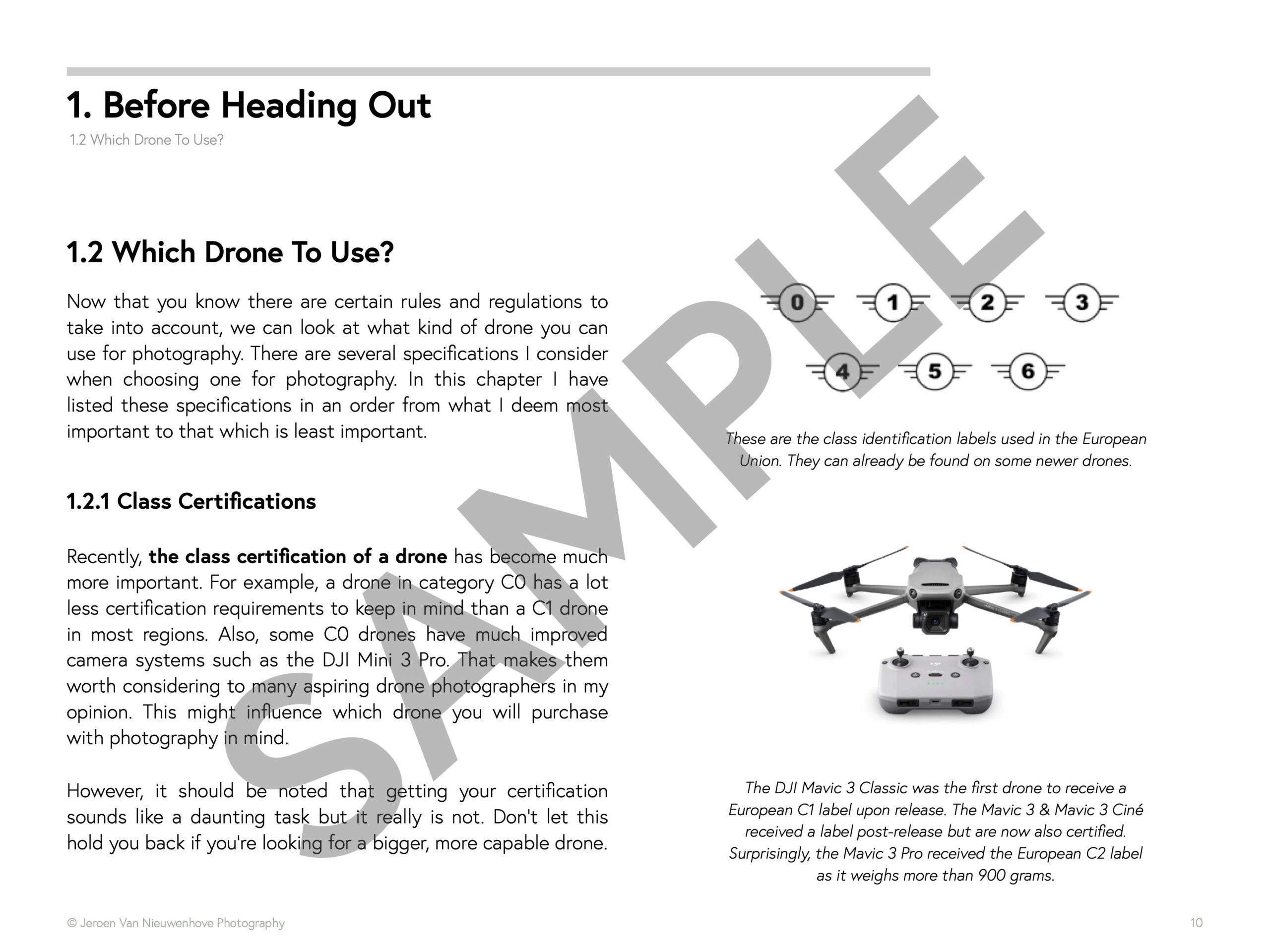

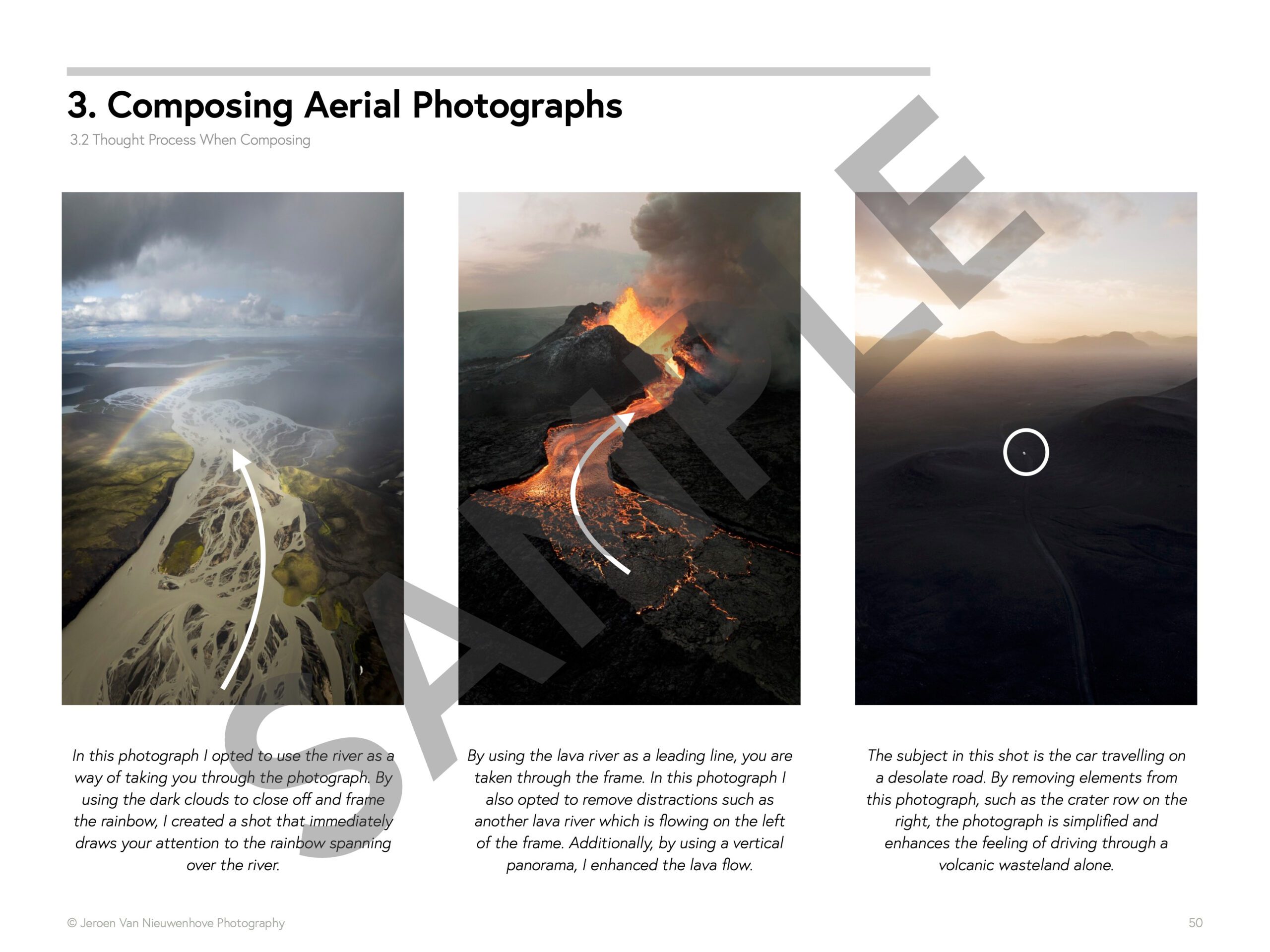







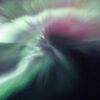


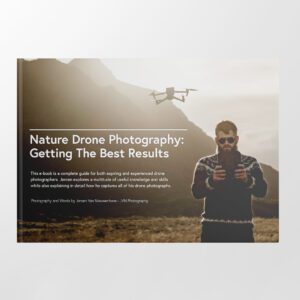

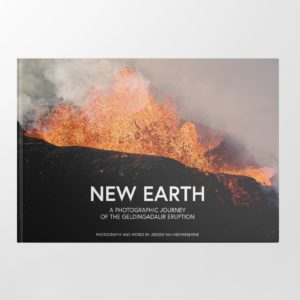
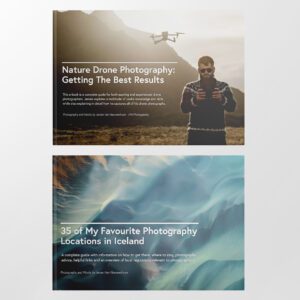


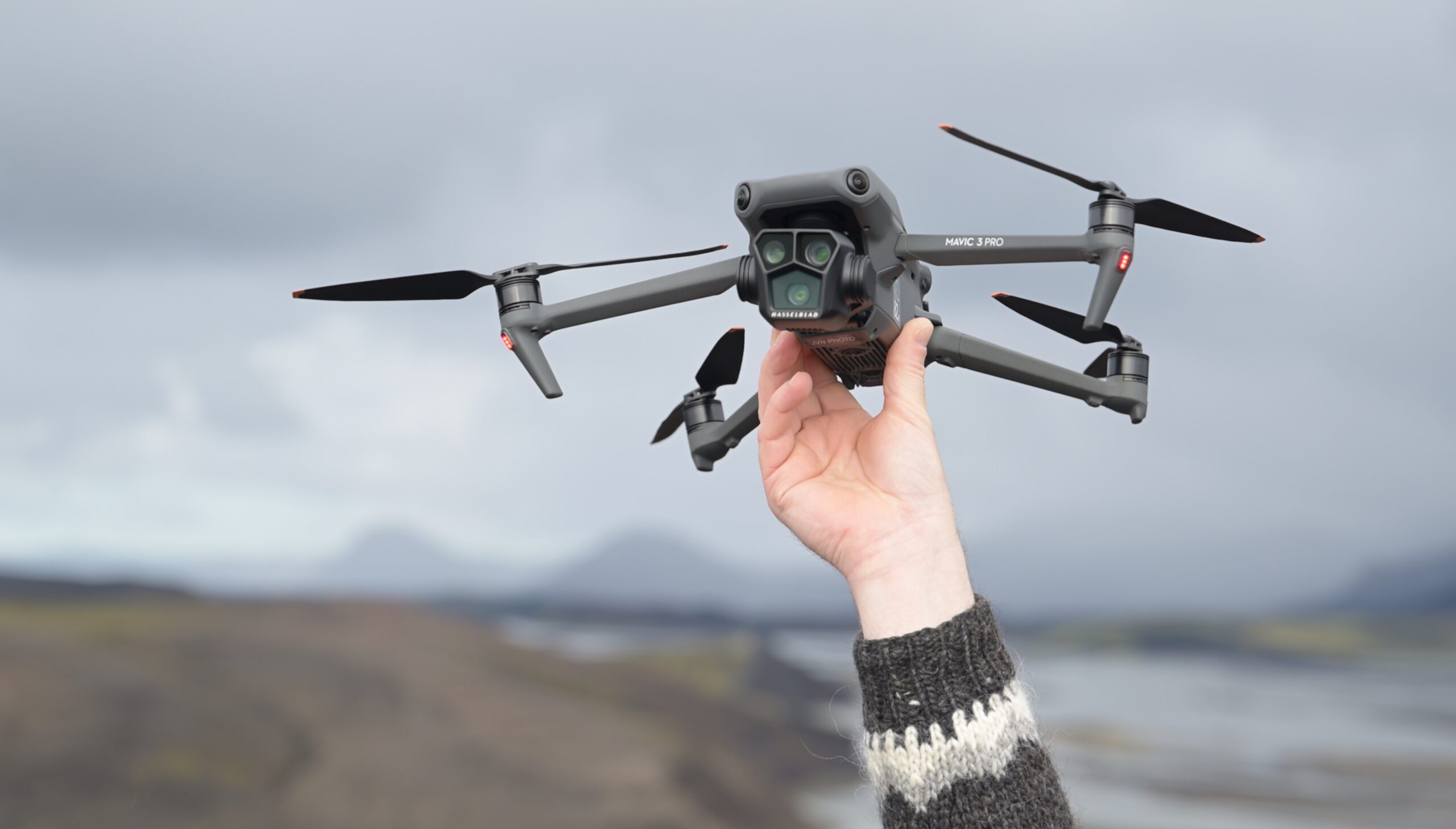
I’m still flying my trusty Mavic 2 Pro. The technology stills seems fantastic to me. It’s good to hear about the Mavic Pro 3 and it’s telephoto functionality. As a hobbyist, not a pro, I can’t even dream about justifying upgrading. The one fly in the DJI ointment is DJI GO 4 and Android. Earlier this year I smashed the screen of my Samsung Tab S3. This was sad, but after an insurance payout I was able to get the Tab S9 which was even better. However, I’ve found to my dismay, recently, that some update to Android (14?) has made the DJI GO 4 app open then immediately disappear to the backround. I’ve chatted with DJI and they’ve ended up saying “bad luck, the Tab S9 is not compatible”. So I now have no useful way of flying my lovely, expensive, drone. There seem to be a lot of comments about this on the web, including the DJI forum. So far I have found no resolution. I wonder if you, as a professional, have any knowledge or comment to make on this very annoying state of affairs?
Sorry to hear that Ted. I have heard that there are issues with USB-C, that app and Android but I haven’t flown the Mavic 2 Pro in more than two years now. One thing you could try is to find a secondhand smart controller which should always work. And because it’s older tech, it will likely not be too pricy. Sorry I can’t offer more help!
Thanks Jeroen Van Nieuwenhove for your excellent review of the DJI Mavic Pro 3 (DMP3) that is both professional and personal/friendly.
I just recently started using DMP3 and it is my first drone. Like you, I am based in Iceland and am fascinated by the eruptions. You have done a great job with those photos. I find you review quite useful.
I agree with the pros and cons. Additionally I find it bad that the little white buttom for MF and AF toggling is right under the x1 lens buttom so one can accidentally switch to MF and lose a lot of footage without knowing. This happened to me a few days ago when getting a “great” shot at the latest eruption.
I have also over this short time (just 2 flight days over the lava) noticed the loss of focus (in AF mode) when using the x3 lens and pointing it directly into a flowing lava stream. This ruined some nice footage and I was not able to repeat it because of the limited time I had after 7.5 km flying to the shooting spot.
On the whole I am loving this drone, especially when shooting several x3 pictures (at 48 Mp) and making a big nice panorama out of them in Lr. The view that one gets is breathtaking and lot of possibilities open up. 🙂
Hi Svanur, thank you for your kind words. It is a curious problem with the focusing on the 3x zoom. I have since discovered that looking straight down seems to trigger it, as if the focusing motor is not strong enough to keep it in focus. When I fly around for a bit longer looking forward, it usually fixes itself.